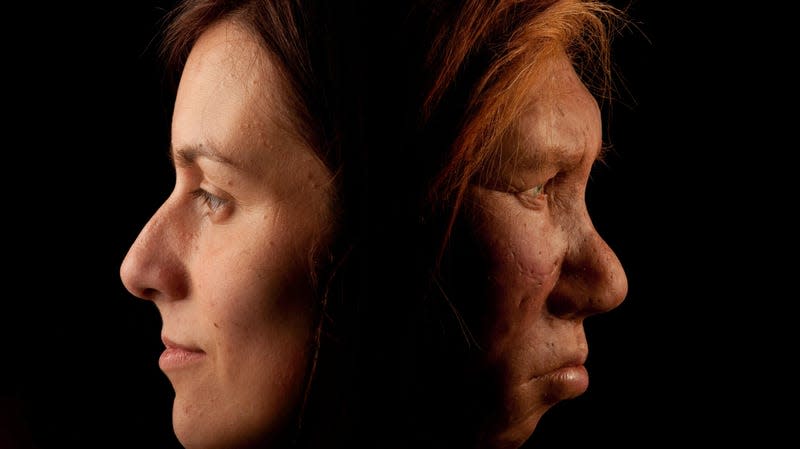Scientists Find Ancient Herpes in Neanderthal Bones

Neanderthal remains from the Altai Mountains contain human viruses, a team of researchers has found, suggesting that infectious diseases may have been transmitted between anatomically modern humans and our closest (extinct) cousins.
The team’s research, posted to the biology research preprint server bioRxiv last month, describes conserved segments of ancient viral genomes the team identified in the Neanderthal’s DNA. These ancient viral fragments, however, are inert and cannot be re-transmitted, posing no risk to modern humans.
The remains were found in Chagyrskaya Cave, where in 2022 a team of researchers identified family members from DNA extracted from the Neanderthals who died there. Chagyrskaya is near the Okladnikov Cave, in which Neanderthal remains were also found, and the now-famous Denisova Cave, unsurprisingly known for the discovery of Denisovan remains on the site. A high-quality genome of a Chagyrskaya Neanderthal was first published in 2020.
Although it’s clear that the human viruses found in Neanderthal genomes are very old, given that Neanderthals went extinct around 40,000 years ago, they are not the oldest viruses by a long shot. Evidence of viruses in vertebrates dates back nearly 300 million years; in 2019, a different team of researchers, writing in PLoS One, described 290-million-year-old evidence of bone disease in an amniote, which they presented as possibly “the earliest indirect evidence of virus in the fossil record.”
But more direct evidence of viruses in long-dead things turns up in microscopic fashion, showing how ancient DNA is corrupted by the viral loads that infected ancient cells. In 2022 a different team of researchers managed to study the presence of herpes in Bronze Age remains. The recent team used the same approach but extended its analysis further back in time; they looked for viral remnants by scanning swathes of recovered Neanderthal DNA and mapping them to three types of double-stranded DNA viruses: adenovirus (often linked to the common cold), herpesvirus (commonly referred to as herpes), and papillomavirus (otherwise known as HPV). They found remnants of all three viruses in the Neanderthals, indicating that the ancient hominins were infected in their lifetimes.
“This DNA contains...a mixture of various DNAs, from the Neanderthal individual themselves plus bacteria, fungus, and viruses that might have infected this individual,” said Marcelo Briones, a genome researcher at the Federal University of São Paulo in Brazil, and the preprint’s lead author, in an email to Gizmodo. “We show that the degree of such changes in the viral genome reads recovered are consistent with the age of the Neanderthal bones, thus showing that they are not present-day contaminants.”

The team also produced evolutionary trees showing that the viruses were not “non-human,” in Briones’ words, ruling out the possibility that the viruses arrived in the Neanderthals via other mammals that scavenged their remains. In other words, the data suggested to the research team that the viruses were indeed pathogens that infected our human cousins, and may have remained present in the Neanderthals over the course of their lifetimes.
“It is more likely that archaic anatomically modern humans infected Neanderthals than the reverse.”
Anatomically modern humans’ environments—surrounded by a diverse range of species that can play host to viruses, like rodents, bats and insects—may have given them “a higher genetic resistance against infectious diseases...compared to Neanderthals,” Briones said, adding that Neanderthals’ limited genetic diversity and smaller overall population may have made them more susceptible to disease. “It is more likely that archaic anatomically modern humans infected Neanderthals than the reverse,” Briones said.
There would’ve been plenty of opportunities for infections to occur, regardless of their direction; though a variety of factors probably contributed to Neanderthals’ disappearance from the fossil record, recent studies have shown a big part of their vanishing was sporadic interbreeding events with anatomically modern humans, who subsumed Neanderthals into their gene pool. Viral loads may have been transmitted, but so too was...intimacy.
Next, the team aims to develop primers that can amplify the viral DNA within the Neanderthal DNA, thereby reducing the uncertainty in identifying components of the DNA strands.
More: Scientists Unearth Ancient DNA Depicting a Battle Between Viruses and Our Ancestors

